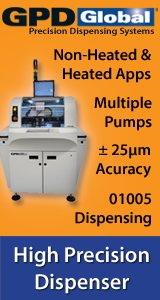Printed Circuit Board Assembly & PCB Design Forum
SMT electronics assembly manufacturing forum.
- SMTnet
- »
- Electronics Forum
- »
- PCB Baking after Wash
PCB Baking after Wash
Views: 11874
![]() Need your opinion guys.. The old timers at the plant here f...
- Dec 02, 2008
by
SYS-STEVEN
Need your opinion guys.. The old timers at the plant here f...
- Dec 02, 2008
by
SYS-STEVEN
![]()
![]()
![]() Hi System Steve,
What is a solvent cleaner over water was...
- Dec 03, 2008
by
Real Chunks
Hi System Steve,
What is a solvent cleaner over water was...
- Dec 03, 2008
by
Real Chunks
![]()
![]()
![]() boards are polyimide, and it is an ipa rinse with the solven...
- Dec 03, 2008
by
SYS-STEVEN
boards are polyimide, and it is an ipa rinse with the solven...
- Dec 03, 2008
by
SYS-STEVEN
![]()
![]()
![]() Hi Steven,
The 24 hrs bake is an overkill according with ...
- Dec 04, 2008
by
Miguel A. Arroyo Colomer, E.I.T.
Hi Steven,
The 24 hrs bake is an overkill according with ...
- Dec 04, 2008
by
Miguel A. Arroyo Colomer, E.I.T.
![]()
![]()
![]() Dear Steven:
Often the recommendations for baking prior t...
- Dec 04, 2008
by
Circuit Connect
Dear Steven:
Often the recommendations for baking prior t...
- Dec 04, 2008
by
Circuit Connect
![]()
![]() Hi Bob,
Do you have information about IPC D-35 for refere...
- Dec 08, 2008
by
SMT-ypw
Hi Bob,
Do you have information about IPC D-35 for refere...
- Dec 08, 2008
by
SMT-ypw
![]()
SYS-STEVEN
- SMTnet
- »
- Electronics Forum
- »
- PCB Baking after Wash







